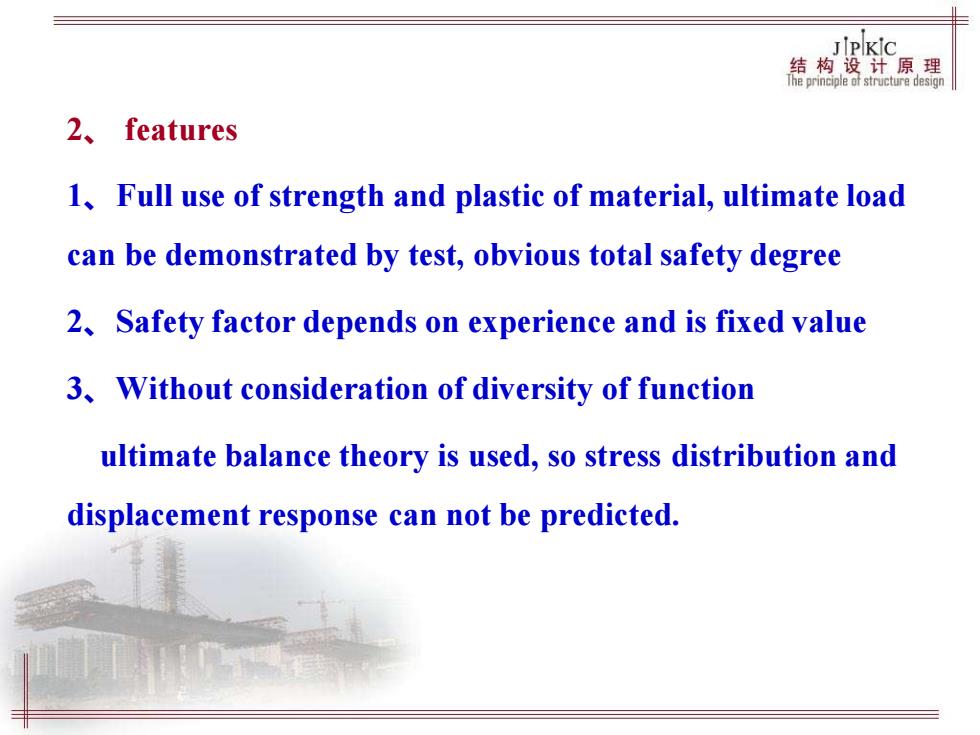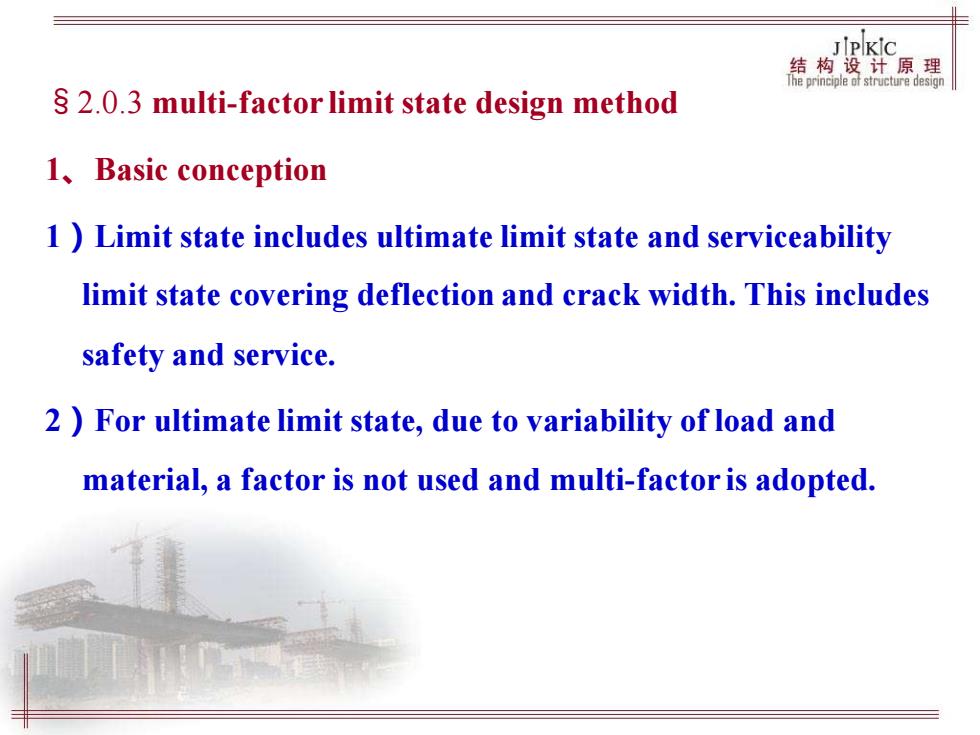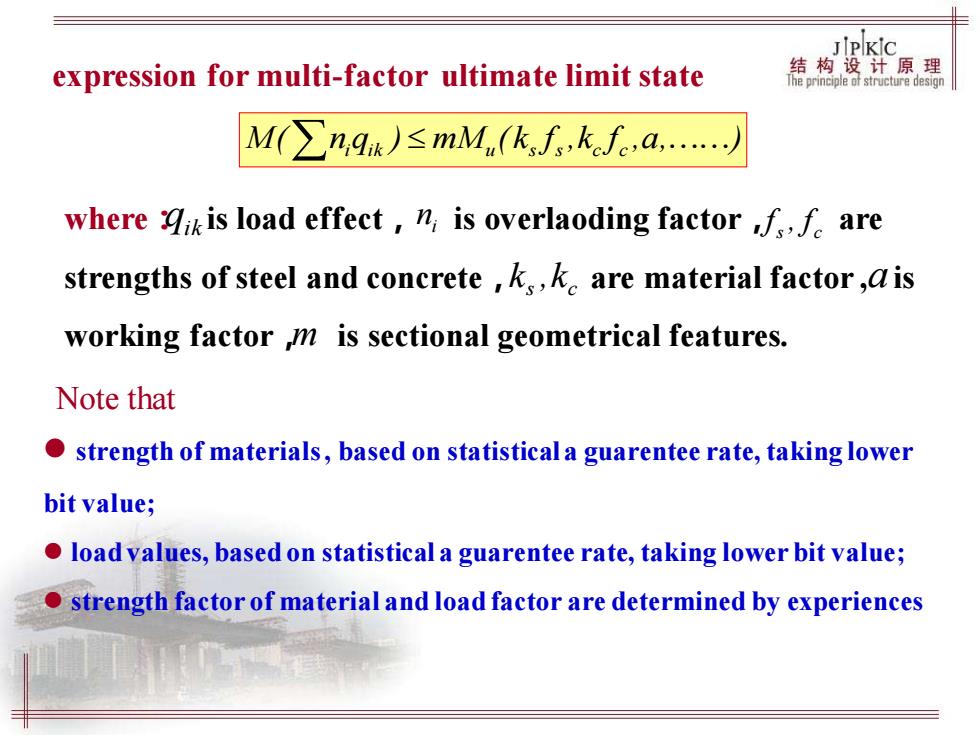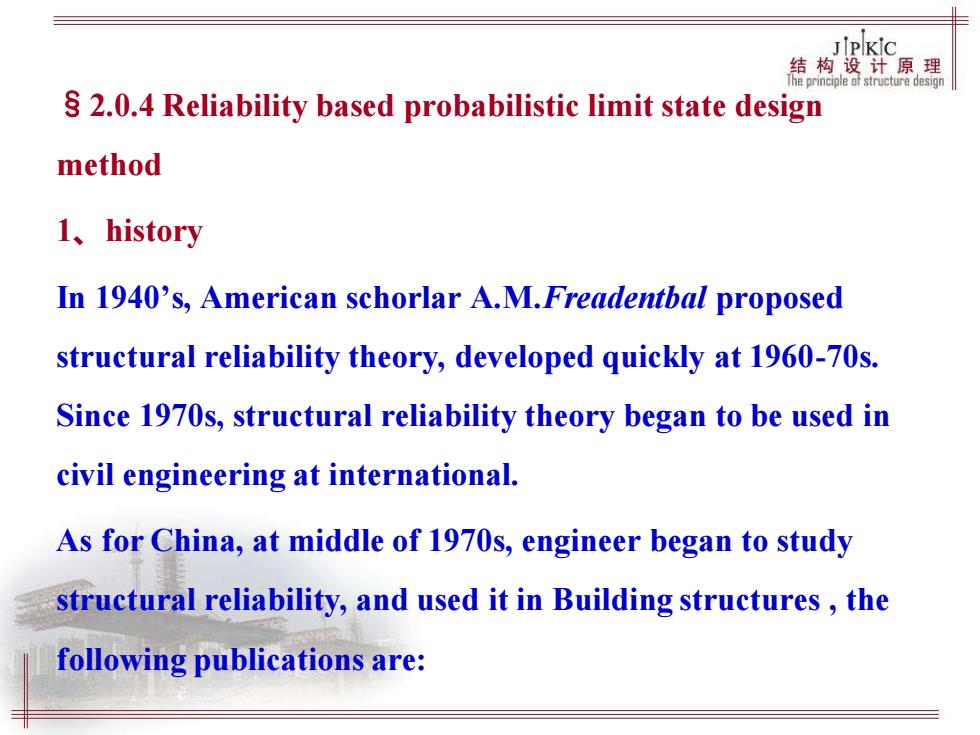
JPKIC 结构设计原理 Tfeprnisipledistctiredesign 2、features 1,Full use of strength and plastic of material,ultimate load can be demonstrated by test,obvious total safety degree 2.Safety factor depends on experience and is fixed value 3,Without consideration of diversity of function ultimate balance theory is used,so stress distribution and displacement response can not be predicted
2、 features 1、Full use of strength and plastic of material, ultimate load can be demonstrated by test, obvious total safety degree 2、Safety factor depends on experience and is fixed value 3、Without consideration of diversity of function ultimate balance theory is used, so stress distribution and displacement response can not be predicted

JIPKIC 箱构设计原黑 2.0.3 multi-factor limit state design method l、Basic conception 1)Limit state includes ultimate limit state and serviceability limit state covering deflection and crack width.This includes safety and service. 2 For ultimate limit state,due to variability of load and material,a factor is not used and multi-factor is adopted
§2.0.3 multi-factor limit state design method 1、Basic conception 1)Limit state includes ultimate limit state and serviceability limit state covering deflection and crack width. This includes safety and service. 2)For ultimate limit state, due to variability of load and material, a factor is not used and multi-factor is adopted

JPKIC expression for multi-factor ultimate limit state 结构设计原理 jhepniheipledstucturedesgn M(∑n,gk)≤nMn(kf,k.fc,a,y where ik is load effect n,is overlaoding factor ff are strengths of steel and concrete,k,k are material factor,ais working factor m is sectional geometrical features. Note that strength of materials,based on statistical a guarentee rate,taking lower bit value; load values,based on statistical a guarentee rate,taking lower bit value; strength factor of material and load factor are determined by experiences
where: is load effect, is overlaoding factor, are strengths of steel and concrete, are material factor , is working factor, is sectional geometrical features. expression for multi-factor ultimate limit state M(n q ) mM ( k f ,k f ,a, ) i i k u s s c c qik s c k ,k i n a m s c f , f ⚫ strength of materials , based on statistical a guarentee rate, taking lower bit value; ⚫ load values, based on statistical a guarentee rate, taking lower bit value; ⚫ strength factor of material and load factor are determined by experiences Note that

JIPKIC 结构设计原黑 2、features 1 selection of safety factor changes from experience to probability statistical. 2 )Essentially,it is a half-experience and half-probability method Bridge Code (JTJ 021-85)used this method
2、features 1) selection of safety factor changes from experience to probability statistical. 2)Essentially, it is a half-experience and half-probability method Bridge Code (JTJ 021-85)used this method

JPKIC 结构设计原理 Teprniipledistnctiredesign S 2.0.4 Reliability based probabilistic limit state design method 1、history In 1940's,American schorlar A.M.Freadentbal proposed structural reliability theory,developed quickly at 1960-70s. Since 1970s,structural reliability theory began to be used in civil engineering at international. As for China,at middle of 1970s,engineer began to study structural reliability,and used it in Building structures,the following publications are:
§2.0.4 Reliability based probabilistic limit state design method 1、history In 1940’s, American schorlar A.M.Freadentbal proposed structural reliability theory, developed quickly at 1960-70s. Since 1970s, structural reliability theory began to be used in civil engineering at international. As for China, at middle of 1970s, engineer began to study structural reliability, and used it in Building structures , the following publications are: